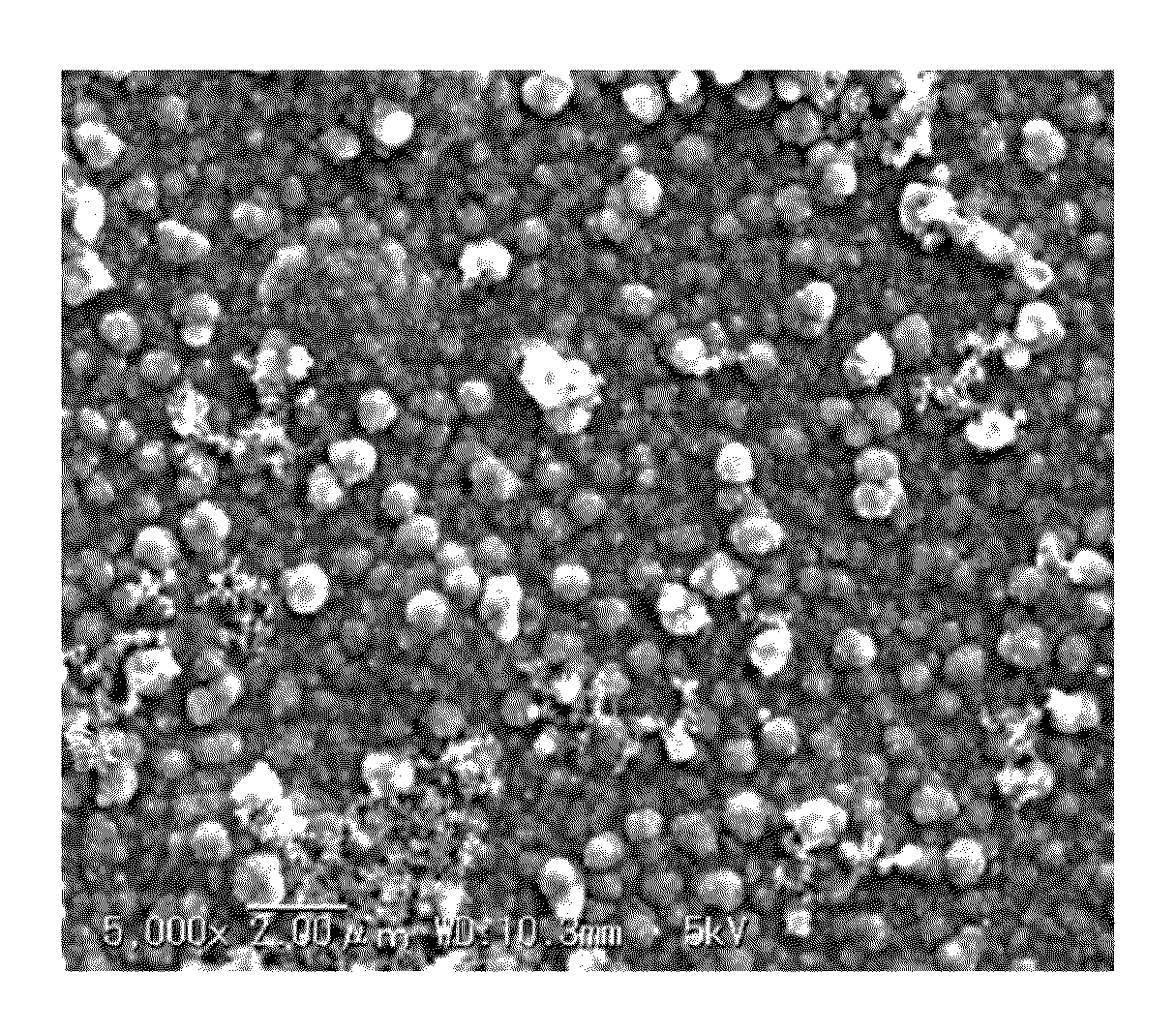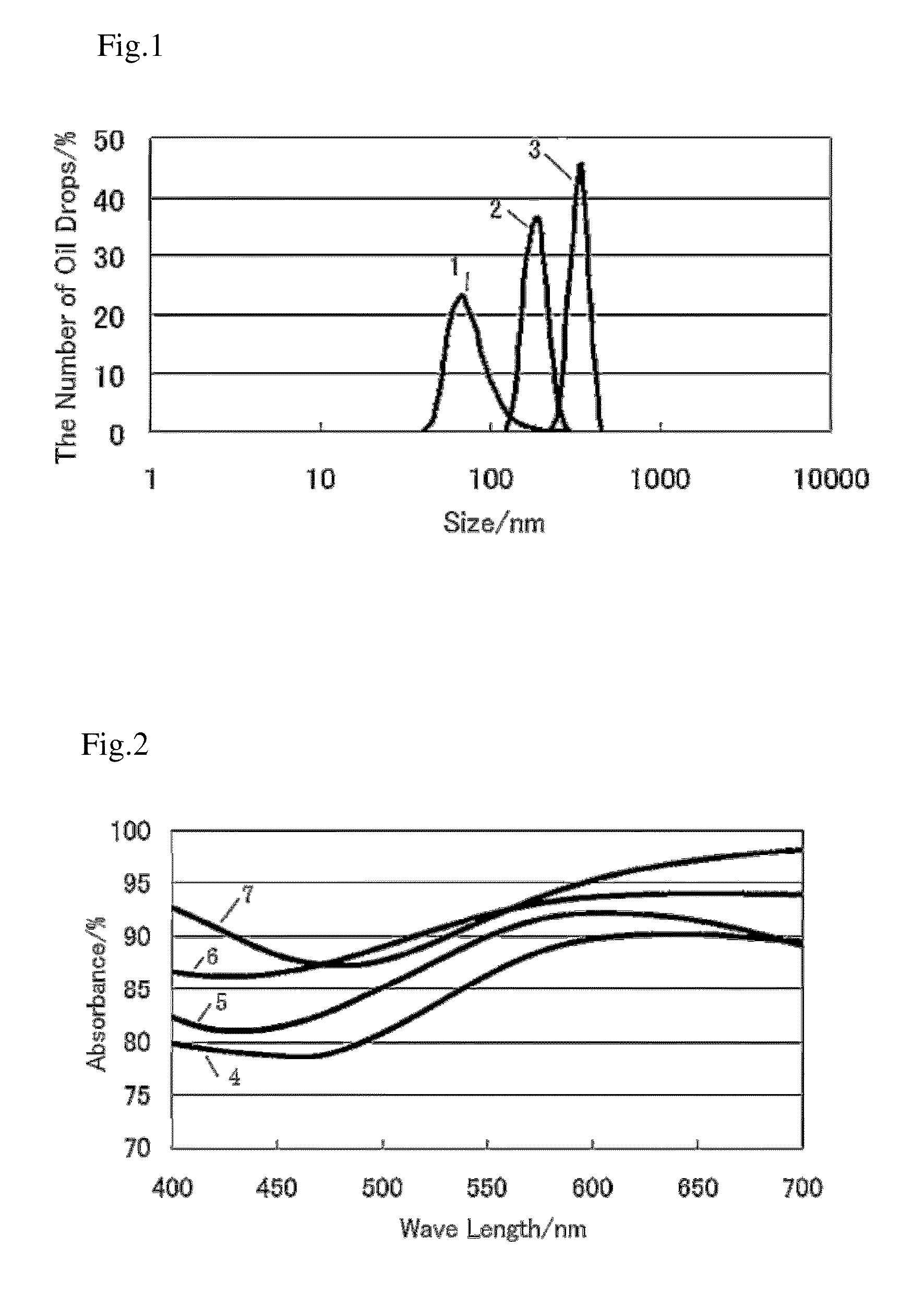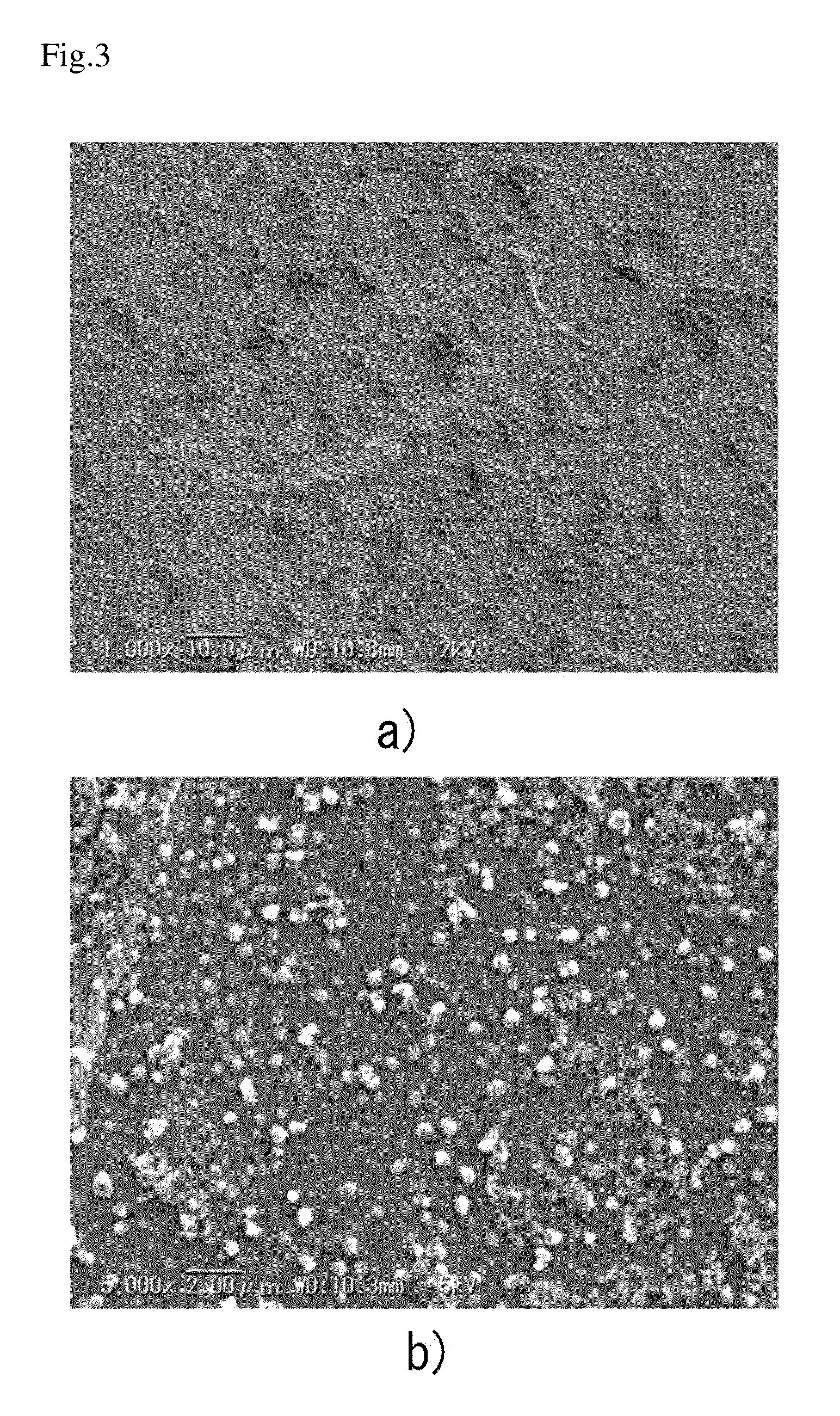Polymerization fluid, method for producing the polymerization fluid, transparent film and transparent electrode made from the polymerization fluid
a technology of polymerization fluid and polymerization fluid, which is applied in the direction of cable/conductor manufacturing, printing, synthetic resin layered products, etc., can solve the problems of reducing the density of the film, reducing the transparency of the film, and losing the smoothness of the film surface, etc., to achieve low environmental burden, high conductivity, and economic efficiency.
- Summary
- Abstract
- Description
- Claims
- Application Information
AI Technical Summary
Benefits of technology
Problems solved by technology
Method used
Image
Examples
examples
[0064]The examples of the present invention are shown as follows, but the present invention is not limited to the following examples.
(1) Stability of Oil Drops
[0065]To investigate the stability of the oil drops of substituted thiophene dispersed in water, the following experiments were carried out.
experiment 1
[0066]50 mL of water was introduced into a glass container, 0.14 g of EDOT (strength: 0.02 M) was added to the solution, and a fluid in which EDOT was phase separated from water was obtained. In the first dispersion step, ultrasonic waves at a frequency of 20 kHz with power of 44 W / cm2 were irradiated into this fluid for 5 minutes and an opaque dispersion was obtained. In the second dispersion step, ultrasonic waves at a frequency of 1.6 MHz with power of 16 W / cm2 were irradiated into this opaque dispersion for 5 minutes to produce the first transparent dispersion, and then, ultrasonic waves at a frequency of 2.4 MHz with power of 7 W / cm2 were irradiated for 5 minutes to produce a second transparent dispersion.
[0067]For each of the opaque dispersion, the first transparent dispersion and the second transparent dispersion, the size (diameter) of EDOT oil drops was measured by the dynamic light scattering method at 25° C., the zeta potential was measured by the electrophoretic light sc...
experiment 2
[0068]The procedure in Experiment 1 was repeated by using 0.144 g of 3,4-dimethoxythiophene (strength: 0.02M) instead of 0.14 g of EDOT. The values of the mean size of the oil drops, the zeta potential, and pH that were measured for the opaque dispersion, the first transparent dispersion and the second transparent dispersion, are shown in Table 2. Table 2 shows that, in the dispersion in which 3,4-dimethoxythiophene is dispersed in water, in the same way as in the case of the dispersion in which EDOT is dispersed in water, by implementing the second dispersion step after the first dispersion step, a stable dispersion in which the aggregation of oil drops is inhibited is obtained, and by implementing the second dispersion step twice, a more stable dispersion in which the aggregation of oil drops is further inhibited is obtained,
TABLE 2Zeta PotentialIrradiation ConditionMean Size (nm)(mV)pH20 kHz243−295.220 kHz→1.6 MHz138−464.520 kHz→1.6 MHz→2.4 MHz55−484.1
(2) Preparation of Polymeriz...
PUM
| Property | Measurement | Unit |
|---|---|---|
| diameter | aaaaa | aaaaa |
| frequency | aaaaa | aaaaa |
| frequency | aaaaa | aaaaa |
Abstract
Description
Claims
Application Information
 Login to View More
Login to View More - R&D
- Intellectual Property
- Life Sciences
- Materials
- Tech Scout
- Unparalleled Data Quality
- Higher Quality Content
- 60% Fewer Hallucinations
Browse by: Latest US Patents, China's latest patents, Technical Efficacy Thesaurus, Application Domain, Technology Topic, Popular Technical Reports.
© 2025 PatSnap. All rights reserved.Legal|Privacy policy|Modern Slavery Act Transparency Statement|Sitemap|About US| Contact US: help@patsnap.com



